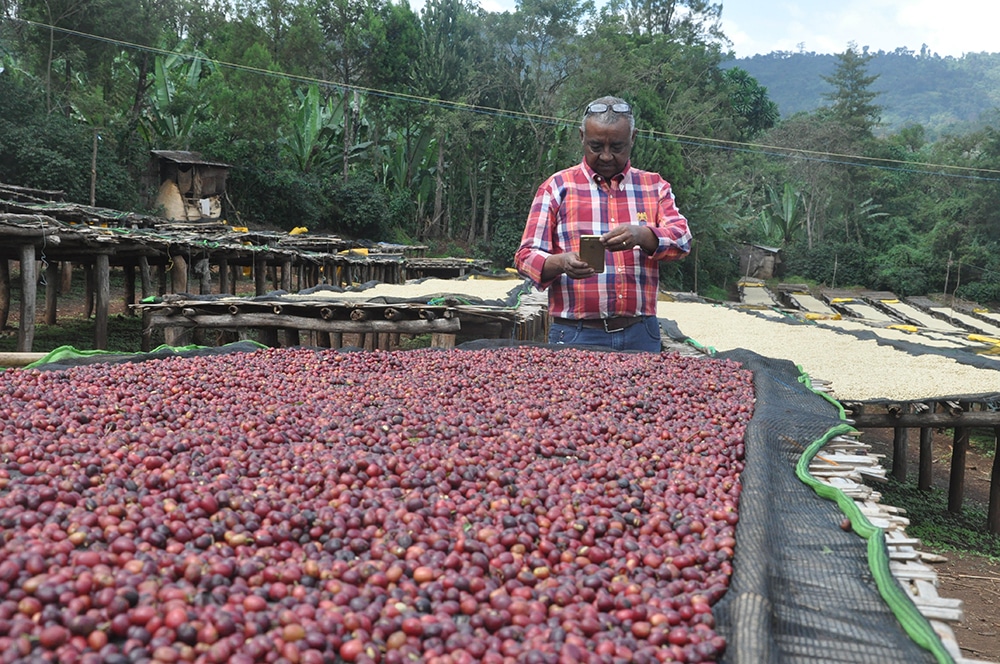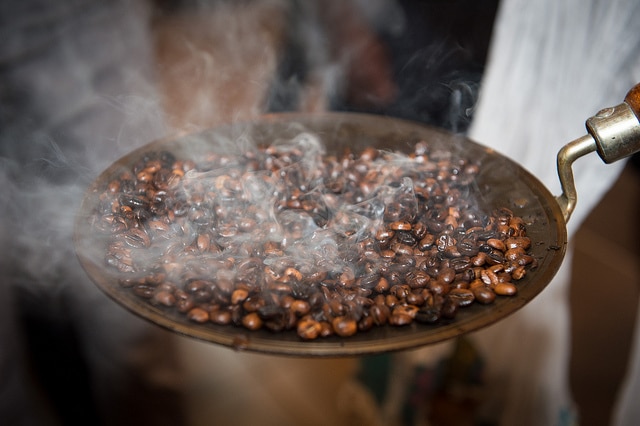The Legend of Kaldi: Dancing Goats
Legends are a funny thing. Sometimes believable, sometimes not, always captivating… able to defy language barriers and even time itself as they spread.
In the realm of coffee-making, there echoes a very persistent legend… You’ve seen its influence, whether you know it or not. No, really! From a reoccurring name to frequent goat imagery—this thing is everywhere!
Allow me to satisfy your growing questions. As is the tradition of all websites belonging to small coffee shop chains, allow me to relay the legend of Kaldi…
Long ago, in 9th century Ethiopia, there lived a goatherd named Kaldi. One day, he noticed that his goats were a bit jumpier than usual. Figuring it had to be something they ate, he waited for them to graze again and caught them nibbling on a bush with bright red berries.
Curious, he tried one of the berries himself…and was struck by a sudden rush of energy! It was like nothing he’d ever felt before—he had to tell somebody!
He grabbed some more berries, ran into a nearby monastery, and showed them to one of the Sufi monks inside. After listening to his story, the monk took the berries…
…and threw them into his fireplace.
That might’ve been the end of Kaldi’s legend… if the other monks hadn’t come in asking what was making such a wonderful smell. The now-roasted berries were fished out, ground up, and diluted in boiling water. And that, it’s told, is how the very first cup of coffee came to be!
Fascinating, isn’t it? I can’t imagine that first cup tasted very good, though. You know, because there’s no mention of the berries getting hulled or even cleaned after being in an ashy fireplace… We’ve all gotta start from somewhere, I guess.
Unfortunately, there’s one little problem with Kaldi’s tale. There’s no shortage of proof that coffee was discovered in Ethiopia, but as for the rest…
Remember how I said it happened in the 9th century? Basically, between the years 800 and 899? Well, the earliest known recording of the tale was written in 1671, almost 8 centuries later. That’s more than enough time for a story to mutate from fact into fiction…or to be made up entirely.
But hey: this is but one of the legends of which the people speak! Let’s take a look at another, and see how it differs!
THE SUFI AND HIS DISCIPLE
Some credit coffee’s discovery to another Sufi that visited Ethiopia between the 13th and 15th centuries. His story is similar to Kaldi’s, but with birds in place of the goats. These accounts sometimes identify him as Sheikh Abu al-Hasan ash-Shadhili, a man whose existence was well documented unlike our legendary goatherd.
However, a different tale centers on the Sheikh’s less extravagantly named disciple, Omar. It’s said that he was once exiled to a cave in Ousab, the “Mountain of the Emeralds”. He ate some berries from a nearby bush, but didn’t like their bitterness. You’d think he’d ignore his personal preferences to keep from starving, but he tried to make them taste better; first by roasting them, then by boiling them. The brown concoction that resulted restored his energy and kept him satiated for days. Word reached the nearby village of Mecca, who invited him to share his miracle drink and made him a Saint!
And that’s just one variation of Omar’s odyssey! There’s one where he’s the disciple of a different Sheikh named Schadheli who led him to Mecca as a ghost. He cured a plague there, fell in love with the king’s daughter, and was exiled to Ousab for advancing on her—then the whole berry thing happened. Your mileage may vary on this one’s legitimacy, but it’s much more interesting, that’s for sure!
There are many legends about coffee and its origins, and each one has its regional variants—too many to list here, in fact! Finding and choosing just these three was nothing short of an adventure, but there’s many more scattered through history, waiting to be spread once more…
—
Hasset Habte



